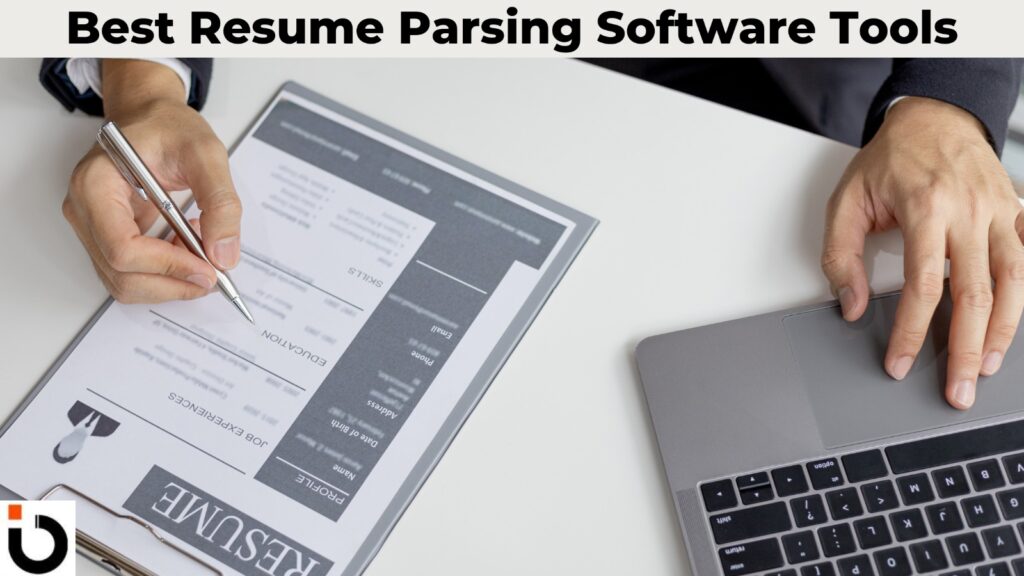In this AI era recruiters need tools that can automate repetitive tasks, reduce time-to-hire, and identify top talent efficiently. Resume parsing software has become a game-changer, especially when integrated with AI-driven insights. For organizations in the USA, UK, Canada, and Brazil—markets with diverse hiring needs and compliance requirements—choosing the right tool is critical.
This article explores the 10 best resume parsing software tools dominating these regions in 2025, with a focus on AI capabilities, multilingual support, and regional adaptability. Let’s dive in!
Table of Contents
ToggleWhy Resume Parsing Software Matters
The field of recruitment is broad and encompasses several specialties. Recruiters have a lot of balls to juggle. They also have a hard job because they are under pressure from both applicants seeking feedback and hiring managers seeking to fill positions.
Resume parsing tools extract data from resumes (PDFs, Word docs, etc.) and auto-populate fields in Applicant Tracking Systems (ATS) or HR databases. They eliminate manual data entry, reduce bias, and speed up shortlisting. Advanced tools now use AI to rank candidates, predict cultural fit, and even engage applicants via chatbots. For global teams, features like multi-language support (e.g., Portuguese for Brazil) and compliance with local regulations (GDPR, LGPD, PIPEDA) are non-negotiable.
Key Features to Look For in a Resume Parsing Software
AI & Machine Learning: Enhances parsing accuracy and offers predictive analytics.
Multi-Language Support: Critical for Brazil (Portuguese) and Canada (French/English).
Regional Compliance: GDPR (UK), LGPD (Brazil), PIPEDA (Canada).
Integration: Compatibility with ATS like Workday or Greenhouse.
Candidate Experience: Mobile-friendly applications and chatbot support.
10 Best Resume Parsing Software Tools
1. Greenhouse (USA & Global)
Overview: A top ATS in the US, Greenhouse offers robust parsing via its “Candidate Profiles” feature, which auto-extracts skills, education, and work history.
AI Features: Integrates with AI tools like XOR for chatbot engagement and bias reduction.
Why It Stands Out: Customizable workflows suit tech, healthcare, and finance sectors.
Best For: Enterprises in the USA and UK needing scalability.
2. Workday Recruiting (USA, Canada)
Overview: Workday’s cloud-based ATS uses machine learning to parse resumes and match candidates to job requirements.
AI Features: Predictive analytics to forecast hiring needs and candidate success.
Compliance: Adheres to PIPEDA (Canada) and OFCCP (USA).
Best For: Mid-sized to large firms in regulated industries.
3. Gupy (Brazil)
Overview: Brazil’s homegrown HR tech star supports Portuguese resumes and offers video interviews.
AI Features: AI-driven candidate scoring and chatbot (Gupy Chat) for instant engagement.
Why It Stands Out: Tailored for Brazil’s LGPD compliance and local job boards.
Best For: Brazilian companies scaling recruitment in LATAM.
4. Lever (USA, UK, Canada)
Overview: Lever’s ATS + CRM combo includes resume parsing and AI-powered candidate rediscovery.
AI Features: “Lever Talent Intelligence” suggests forgotten candidates from your database.
Compliance: GDPR-ready for UK/EU roles.
Best For: High-volume tech hiring in competitive markets.
5. SAP SuccessFactors (Global)
Overview: SAP’s HR suite includes AI resume parsing and global compliance tools.
AI Features: Skills ontology and diversity hiring analytics.
Languages: Supports 30+ languages, including Portuguese.
Best For: Multinationals in Brazil or Canada needing localization.

6. HireVue (USA, UK)
Overview: HireVue combines video interviews with AI resume parsing and assessments.
AI Features: NLP analyzes speech and text for soft skills.
Compliance: GDPR and EEOC compliant.
Best For: Roles requiring cultural fit (e.g., customer service in the UK).
7. Zoho Recruit (USA, Brazil)
Overview: Zoho’s affordable ATS offers parsing, AI job matching, and multilingual support.
AI Features: “Zia Intelligence” suggests job description improvements.
Why It Stands Out: Portuguese interface for Brazilian teams.
Best For: SMBs in emerging markets like Brazil.
8 . Sovren Resume Parser (Global)
Overview: Sovren is a deep-learning-powered parser focused on accuracy and compliance. It’s ideal for parsing resumes into structured data for ATS, HRIS, or analytics platforms.
AI Features:
Bias Detection: Flags gendered language or age-related terms in resumes.
Semantic Search: Finds candidates based on contextual skills, not just keywords.
Why It Stands Out: GDPR, LGPD, and PIPEDA compliance out-of-the-box, with military-grade data encryption.
Languages: Portuguese, Spanish, French, and English.
Best For: Companies in Brazil and Canada needing bulletproof data security.
9. Manatal ATS (Global)
Overview: A rising AI-powered ATS with resume parsing and social media enrichment.
AI Features: Candidate scoring based on LinkedIn and resume data.
Languages: Supports Portuguese, Spanish, and French.
Best For: Brazilian startups and remote teams.
10. BambooHR Applicant Tracking (USA, Canada)
Overview: Known for SMBs, BambooHR offers simple parsing and onboarding.
AI Features: Basic automation for sorting applications.
Why It Stands Out: User-friendly and affordable for small teams.
Best For: Canadian SMEs and US nonprofits.
What is BambooHR?
BambooHR is a user-friendly, cloud-based HR software designed for small to mid-sized businesses. It offers resume parsing, applicant tracking, employee onboarding, and HR data management, with a focus on simplicity and compliance (e.g., PIPEDA in Canada, OFCCP in the USA). Ideal for SMBs and nonprofits seeking affordable, intuitive HR tools.
11. Daxtra Parser (USA, UK, Global)
Overview: Daxtra is a dedicated resume/CV parsing tool trusted by staffing giants and enterprises. It uses NLP and AI to extract data from resumes in 50+ languages, including complex fields like skills, certifications, and job titles.
AI Features:
Contextual analysis to resolve ambiguities (e.g., “Java” as programming language vs. coffee).
Machine learning improves accuracy with regional resume formats (e.g., UK CVs vs. US resumes).
Why It Stands Out: Unmatched multilingual support, including Portuguese for Brazil and French for Canada.
Compliance: GDPR (UK), OFCCP (USA), and LGPD (Brazil).
Best For: Global staffing agencies and enterprises parsing 10,000+ resumes monthly.
12. RChilli Parser (USA, Canada, Brazil)
Overview: RChilli is a market-leading resume parsing API integrated with 150+ ATS/CRM platforms. It excels at parsing structured and unstructured data, even from scanned documents.
AI Features:
Skill-to-Job Matching: AI ranks candidates based on job descriptions.
Data Enrichment: Auto-fills missing candidate info using LinkedIn and other sources.
Why It Stands Out: Supports 30+ languages, including Portuguese (Brazil) and French (Canada), with 99% parsing accuracy.
Compliance: LGPD, PIPEDA, GDPR, and EEOC.
Best For: High-volume recruiters in tech, healthcare, and Brazil’s booming fintech sector.
AI in Resume Parsing Software: Beyond Data Extraction
Modern tools leverage AI to:
Reduce Bias: Hide demographic data during initial screening.
Predict Performance: Match resumes to high-performing employee profiles.
Engage Candidates: Chatbots answer FAQs and schedule interviews (e.g., XOR, Olivia).
FAQs on Resume Parsing Software
Q1: Can resume parsing tools handle Portuguese resumes?
Yes! Gupy, SAP SuccessFactors, and Zoho Recruit support Portuguese.
Q2: How does AI improve resume parsing?
AI reduces errors in parsing complex formats and predicts candidate success.
Q3: Which tool is best for Brazilian startups?
Gupy or Manatal for affordability and LGPD compliance.
Final Thoughts
The right resume parsing tool depends on your region, industry, and company size. AI-driven tools like HireVue and Greenhouse lead in the US/UK, while Gupy dominates Brazil. Always prioritize compliance and localization to stay competitive.
By choosing software that aligns with your market’s needs, you’ll transform recruitment from a chore into a strategic advantage.

